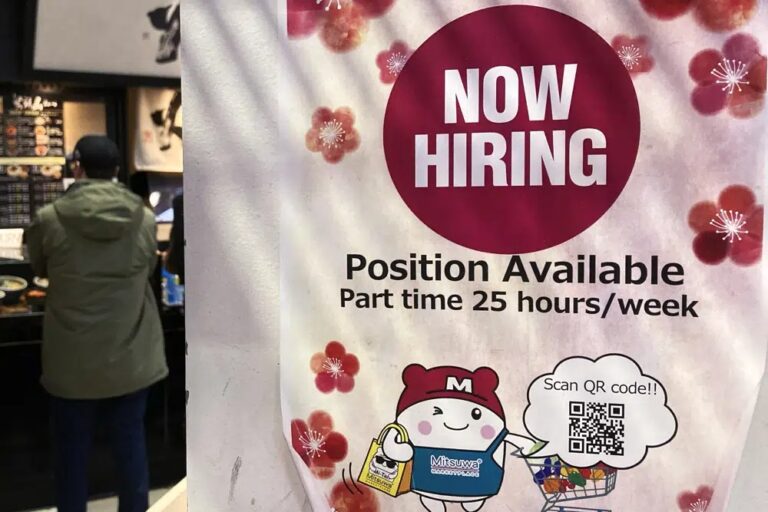The number of Americans applying for jobless benefits fell to the lowest level in more than three months last week, reflecting a still-robust job market despite the Federal Reserve’s efforts to cool the economy and bring down decades-high inflation.
Applications for unemployment aid for the week ending Dec. 31 fell by 19,000 to 204,000, the Labor Department reported Thursday.
The labor market is closely monitored by Fed policymakers, who raised interest rates seven times last year in a bid to slow job growth and bring down stubbornly high inflation. So far, there have been little indication that it has weakened the job market enough to for the Fed to alter its course in 2023.
Also Thursday morning, the payroll processing firm ADP reported that the U.S. economy gained 235,000 jobs, well above expectations.
U.S. futures dropped sharply on worries that a hot jobs market will mean the Fed will continue with aggressive rate hikes well into the new year.
The four-week moving average of claims, which evens out some of the week-to-week volatility, fell by 6,750 to 213,750.
Jobless claims are generally viewed as a proxy for layoffs, which have been relatively low since the pandemic wiped out roughly 20 million jobs in the spring of 2020.
About 1.69 million people were receiving jobless aid the week that ended Dec. 24, about 24,000 fewer than the week before.
On Wednesday, the government reported that job openings slipped slightly in November, but remained strong. There were 10.46 million job vacancies on the last day of November, down slightly from 10.51 million in October. But there are still nearly 1.8 jobs for every unemployed person, whereas before the pandemic, there were usually more unemployed people than jobs.
The government issues its December jobs report on Friday, with economists surveyed by data firm FactSet expecting the U.S. economy to have gained another 200,000 jobs, a healthy number. Employers added 263,000 jobs in November and the unemployment rate stayed at a low 3.7%.
In its updated forecasts, the Fed’s policymakers predicted slower growth and higher unemployment for next year and 2024. The unemployment rate is projected to jump to 4.6% by the end of 2023. That would mark a significant increase in joblessness and typically would reflect a recession, which many economists have predicted.
The Fed’s rate hikes last year have made it more expensive for consumers to take out mortgage and auto loans, and raised borrowing rates for credit cards.
Mortgage rates are above 6%, essentially double what they were before the Fed began tightening credit. Higher mortgage rates have hammered the housing market, with sales of existing homes falling for 10 straight months.
Though the U.S. labor market remains robust, layoffs have been mounting in the technology sector, which is dealing with falling demand as inflation squeezes both businesses and homes. On Wednesday, Amazon announced that it is laying off 18,000 workers, while the software company Salesforce, owner of Slack, said it was cutting around 8,000 jobs. Facebook parent Meta, Twitter, Doordash and others have announced cuts in recent months as well.
In the coming weeks, thousands of workers with temporary jobs during the winter holidays will lose work and apply for jobless aid. The government seeks to seasonally adjust the data to account for those job losses, but the adjustments are not always perfect and the layoff of temporary workers could distort the data.
(AP)











